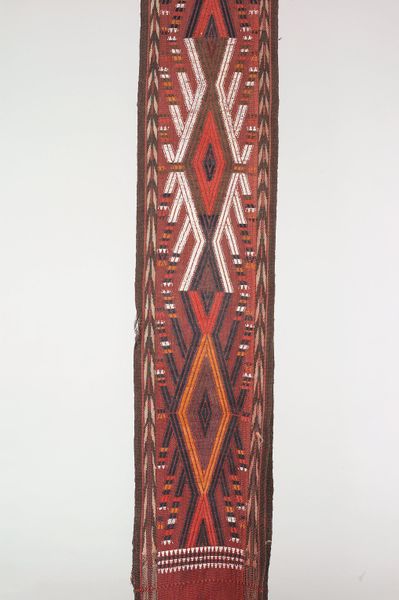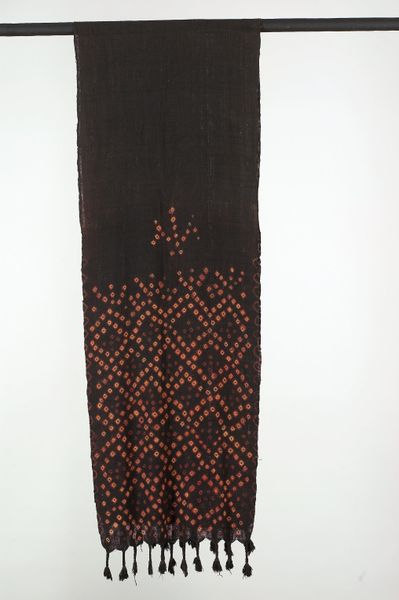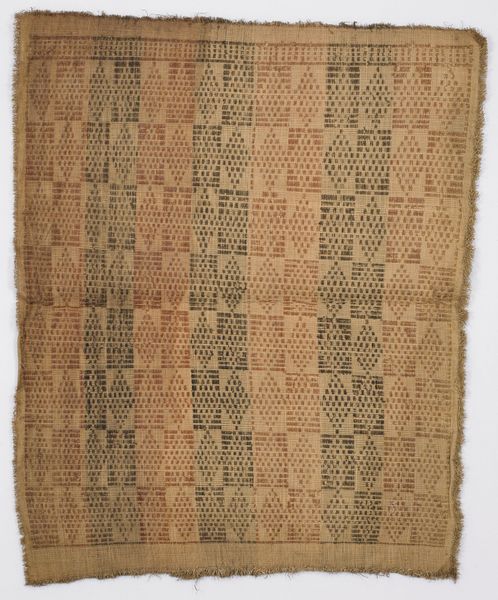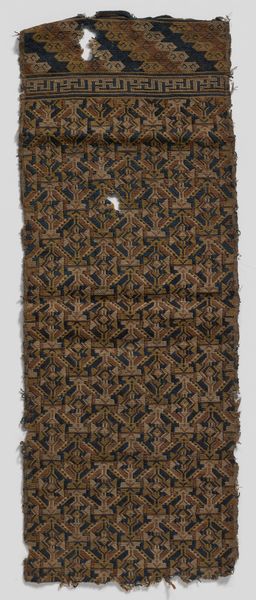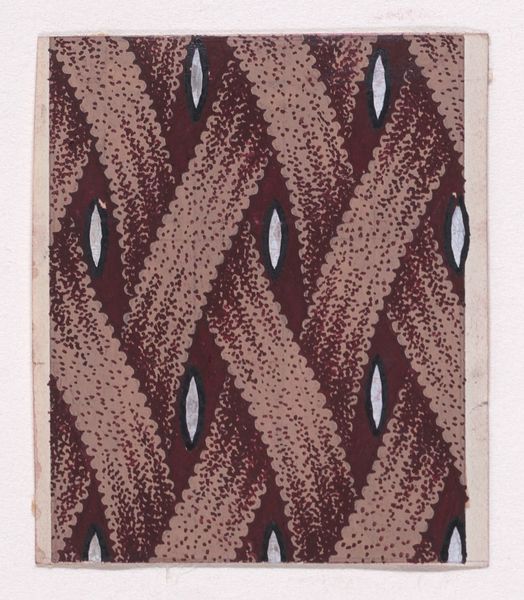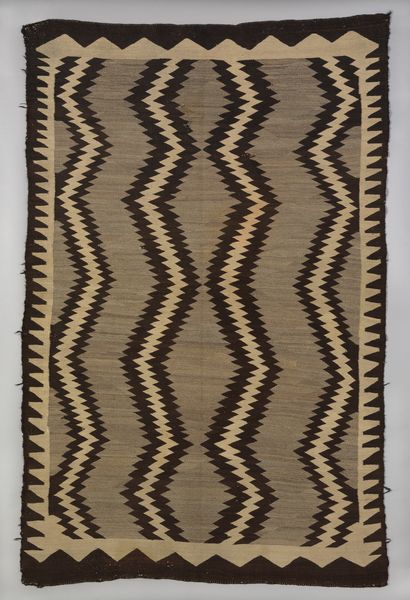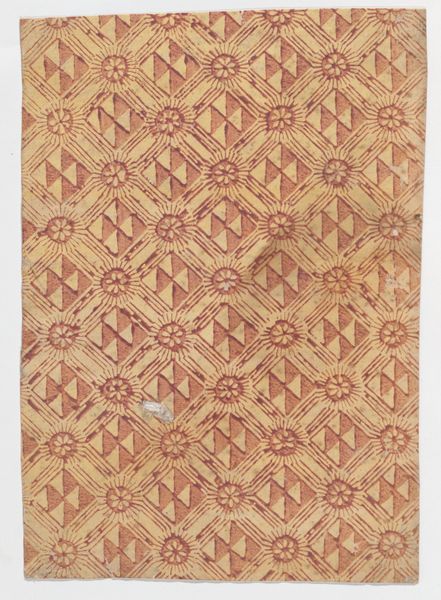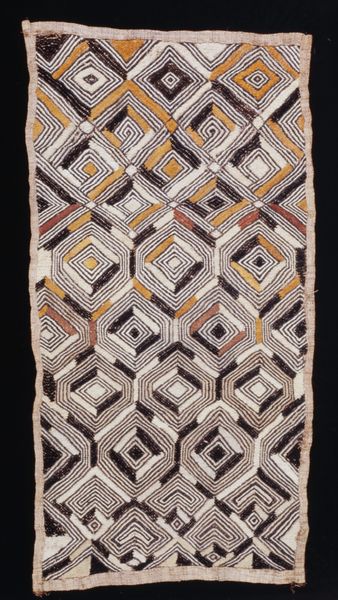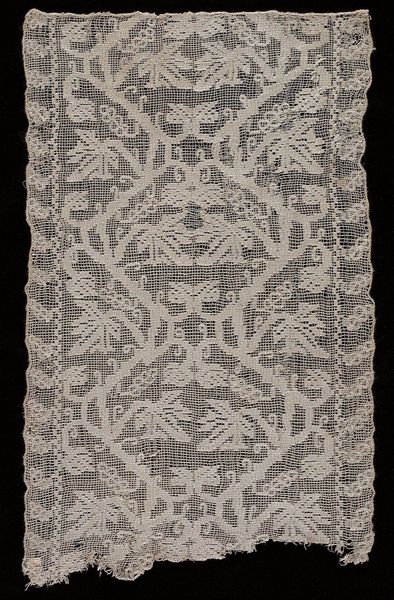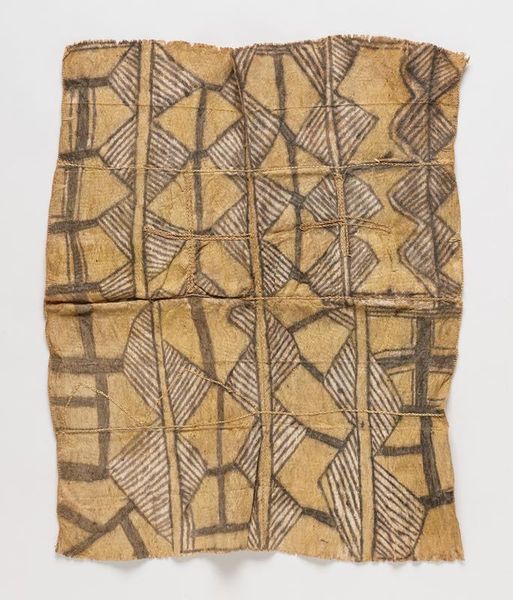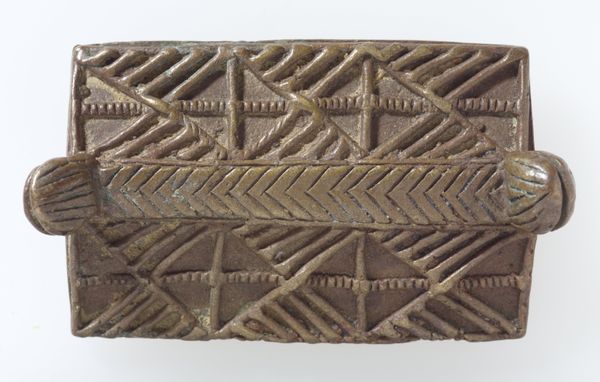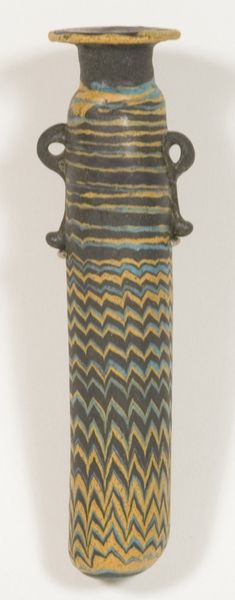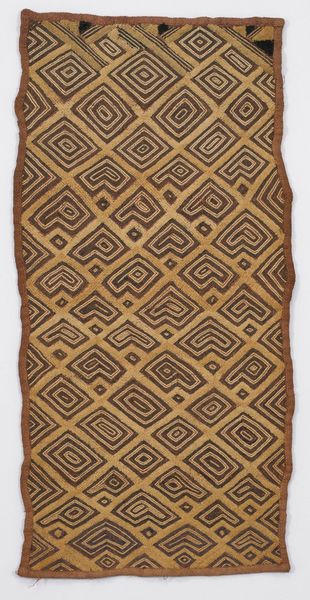
textile
#
natural stone pattern
#
pattern
#
textile
#
pattern design
#
repetitive shape and pattern
#
geometric
#
repetition of pattern
#
vertical pattern
#
regular pattern
#
pattern repetition
#
textile design
#
imprinted textile
#
layered pattern
Dimensions: 22-1/2 x 14-1/4 in. (57.2 x 36.2 cm)
Copyright: Public Domain
Editor: This is a Loincloth made by the Mbuti people, likely sometime in the 20th century. It's a textile piece, and I’m immediately struck by its striking geometric patterns and how rhythmically they repeat. What is your interpretation of this artwork? Curator: This barkcloth loincloth offers a lens through which we can consider the Mbuti people's relationship to their environment and broader sociopolitical power dynamics. The repeated triangular patterns and motifs resonate deeply with the forest they inhabit, the very source of their livelihood and identity. Editor: I can see that now. The triangles could represent the trees, the repeating patterns like the cycles of the forest. But what about the act of creating a loincloth itself? Curator: Precisely. It's crucial to understand the production of this cloth within the context of gender roles. Traditionally, Mbuti women are responsible for creating barkcloth, embedding it with symbolic meaning. These designs aren’t just decorative; they’re carriers of cultural knowledge and perhaps even a subtle form of resistance. Editor: Resistance? Against what? Curator: Historically, the Mbuti have faced marginalization and discrimination from neighboring groups and colonial powers. Creating and wearing such distinct clothing asserts cultural identity in the face of these pressures. Think about how clothing can become a powerful tool of self-expression and even defiance. Does knowing that influence how you read the piece now? Editor: It definitely adds another layer. It's not just a pretty pattern; it's a statement. I never would have thought about it that way. Curator: Exactly, understanding the social and historical context is key. By analyzing this seemingly simple loincloth, we unveil intricate narratives of identity, resilience, and resistance woven into the very fabric of everyday life. Editor: This makes me realize how much more there is to art than what immediately meets the eye. There's so much to unpack and discover.
Comments
No comments
Be the first to comment and join the conversation on the ultimate creative platform.
